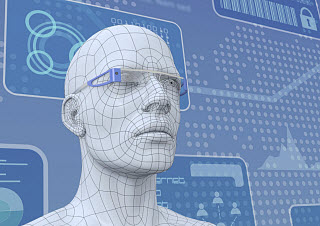The new app for the head mounted wearable tech can make detections in real time.
Researchers, from Germany’s Fraunhofer Institute for Integrated Circuits, have created a first of its kind application for Google Glass that has the ability to measure human emotions and can also determine a person’s gender and gauge their age.
The SHORE real time analysis and face detection software was adapted to work with Glass.
The Sophisticated High-speed Object Recognition Engine (SHORE) can detect a human face with the help of the integrated camera in Glass and gauge a person’s emotions, determining if they are happy, sad, surprised, or angry through a facial expression analysis. At the same time, the app can estimate their age or determine their gender, as well as other aspects about them.
According to the specifications of the product on the official site, the gender detection rate of the face that is being viewed is 94.3 percent. To help the software identify real faces it utilizes a database of over 10,000 annotated faces as a point of reference. All calculations that the technology makes is done in real time by the eye-wear’s integrated CPU.
That being said, the researchers have noted that the app cannot verify a person’s identity and prohibits users from being able to discover a person’s identity through it. In fact, to ensure privacy, the app developers have promised that no data or images that are collected are sent to the cloud. The image data never leaves the device.
The Google Glass app could benefit individuals with sensory processing disorders.
This application is much more than just a gimmick. It has real potential for acting as a communication aid. For instance, a person who has a sensory processing disorder, such as autism, may benefit from the application because it can help them detect a person’s emotions. Interpreting emotions via facial expressions is something many autistics finds difficult.
Furthermore, the technology can be advantageous for those who are visually impaired, as it can provide them with supplementary audio information about the individuals who are within their surroundings. In addition, aside from Google Glass, the software could also be used in other apps like market research or interactive games.

 The patent application reveals relatively normal looking spectacles with a thick frame that features a display apparatus, which is tucked on the inside and is attached to the right arm of the glasses near the hinge. This would not only hide the projector, but make the
The patent application reveals relatively normal looking spectacles with a thick frame that features a display apparatus, which is tucked on the inside and is attached to the right arm of the glasses near the hinge. This would not only hide the projector, but make the 